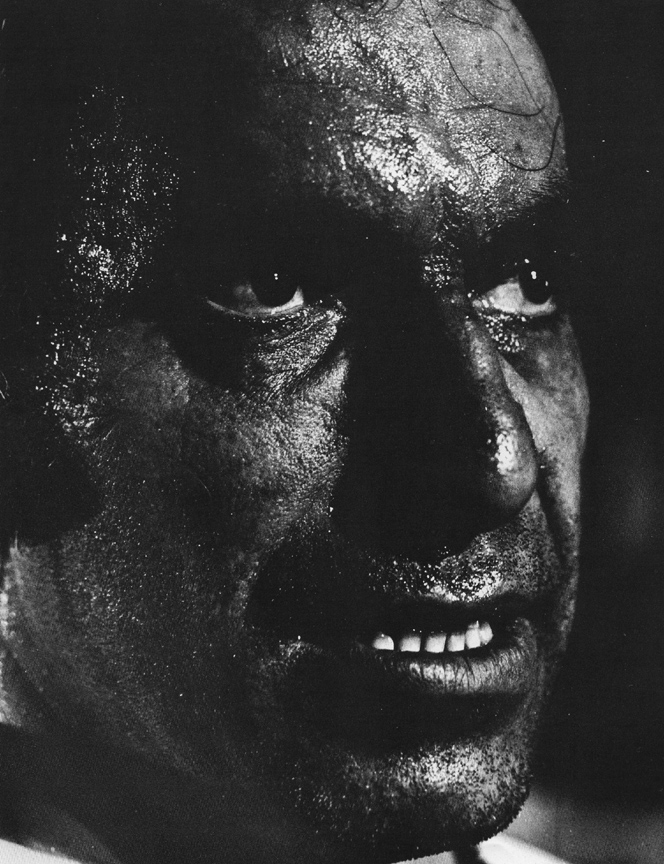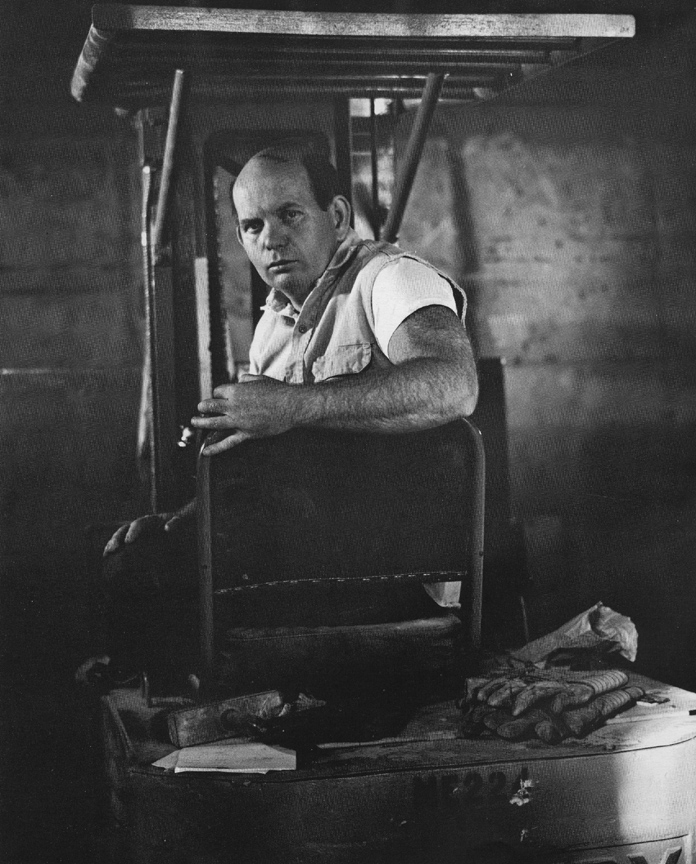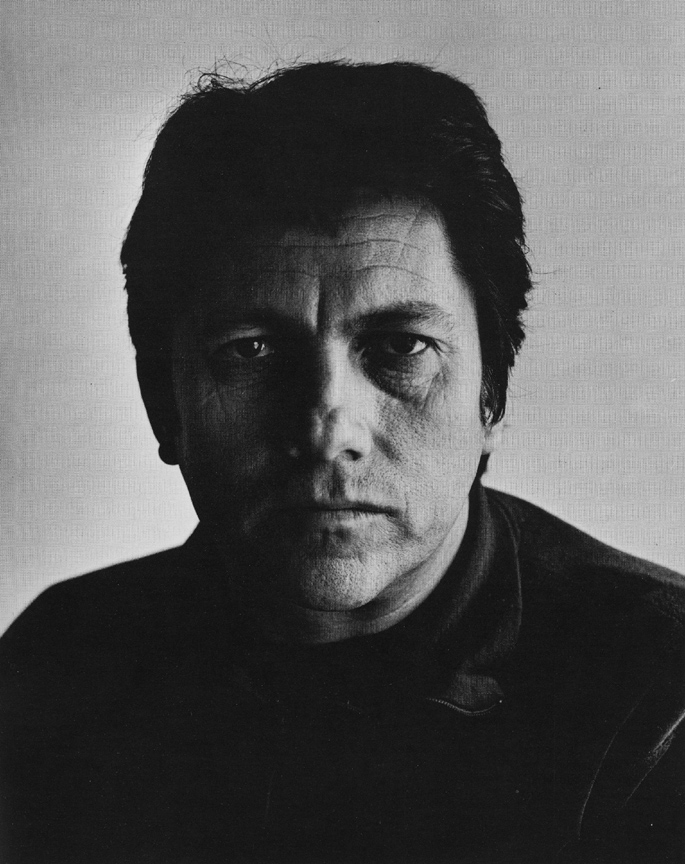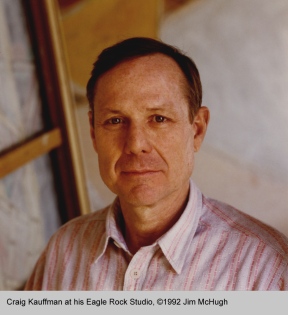Posts Tagged ‘Peter Voulkos’
More Music
There’s a lot of noise about car culture being the source for Los Angeles artists. Forget that noise, what about music? Some of the sparkplugs of the L.A. scene have pretty big backgrounds with music—from jazz to folk, and from Spanish flamenco guitar to Ry Cooder’s Tex-Mex blend.
In my last post, I wrote about Craig Kauffman’s early interest in jazz—something that was integrated with the beginnings of contemporary art exhibits in L.A., and the Concert Hall Workshop he started with Walter Hopps and Jim Newman. Ken Allen wrote a great biographical piece which notes that trio’s jazz programs, and stated, “Hopps’ transition from college science major to arts impresario in the mid-1950s is marked by his interest in jazz and his earliest attempts to bring a wider audience to contemporary art in Los Angeles”.
But there is so much more about music. Peter Voulkos studied flamenco when he lived in L.A., at the same time he was making major sculptural works that would redefine ceramics. Sure, he and his friends drove around the city and looked at art exhibits, new buildings, and stayed up all night—that’s all part of the legend. But don’t forget that some major works, pieces like Sevillanas, Black Bulerias, and Tientos, are named after songs and dances in the art of flamenco. And the link is totally summed up when Voulkos makes the statement: “The minute you touch a piece of clay it responds, it’s like music—you have to know all the structure of music and how to make it, before you can come up with anything.”
Or, consider Ken Price. The myth is that Price and others in L.A. are “part of a tight-knit band of surfer artists.” (in the New York Times !) Ridiculous repeated stereotypes obscure a better understanding of the artists. What about Price’s history with music, which spans a lifetime? Ken Price studied jazz with none other than the great American jazz trumpeter Chet Baker. Later, for his friend Ry Cooder’s album Chicken Skin Music, Price’s wonderfully colorful and witty painting was the cover image. The fusion of color and form on an abstract sculpture is not far from the abstract world of music.
 Some journalists seem bent on portraying the artists’ new use of materials as some kind of hot-rod fueled finish fetish. But, truth be told, key artist Larry Bell was very involved in the late-50s folk music movement, and never drove a hot car. Don’t forget that Larry Bell worked, for a while, at a folk club called the Unicorn. This, after introducing so many of his fellow artists to the folk music of the late 1950s, including the sounds of Leadbelly, Sonny Terry, Pete Seeger and Woody Guthrie. Bell still plays guitar—often choosing one of the 12 string guitars in his huge collection. Larry Bell may keep a studio within a block of the Venice boardwalk. But he doesn’t surf, and drives a well-worn Chevy Suburban, hardly a hot-rod.
Some journalists seem bent on portraying the artists’ new use of materials as some kind of hot-rod fueled finish fetish. But, truth be told, key artist Larry Bell was very involved in the late-50s folk music movement, and never drove a hot car. Don’t forget that Larry Bell worked, for a while, at a folk club called the Unicorn. This, after introducing so many of his fellow artists to the folk music of the late 1950s, including the sounds of Leadbelly, Sonny Terry, Pete Seeger and Woody Guthrie. Bell still plays guitar—often choosing one of the 12 string guitars in his huge collection. Larry Bell may keep a studio within a block of the Venice boardwalk. But he doesn’t surf, and drives a well-worn Chevy Suburban, hardly a hot-rod.
Get Ready
The press is coming…about Pacific Standard Time. For those who are willing and able to devote some time, there are lots of resources. Want to read about the big Getty-sponsored initiative? You’ll have choices, and can read about dozens of exhibits, personalities, legends and history—in print and on line. Start with the Los Angeles Times and the Getty’s own massive site, and just follow the links. Or, take a look at the October issues of several magazines, including Art in America, or Art and Auction, coming out soon. As big print presses roll and little digital pixels emit, the world will have a hard time avoiding Pacific Standard Time. For backgound, look to the excellent article by Jori Finkel in today’s L.A. Times, and be sure to read Hunter Drohojowska Philp’s introduction to the artists and the time period. Or, take a look at the critic’s notebook about the upcoming “Crosscurrents” show at the Getty Museum, written by Christopher Knight.
For those with an eye for classic black and white photos, there’s an archival photo show from the Times. And for further reading and more images, it’s fun to meander around the section titled “People” on the main Pacific Standard Time site. Whatever you do, don’t forget that the artists from the Frank Lloyd Gallery, like Larry Bell, John Mason, Peter Voulkos and Craig Kauffman, are absolutely central to the development of contemporary art in Los Angeles.
From left to right: Vivian Rowan, Larry Bell, Avilda Moses, Ed Moses, the late Patricia Faure and the late Craig Kauffman. Photo taken in 2006 and copyright by Alan Shaffer.
2010 in review
It seems like everyone likes to review the year. I had some help with reviewing this blog. The stats helper monkeys at WordPress.com mulled over how this blog did in 2010, and here’s a high level summary of its overall blog health:

The Blog-Health-o-Meter™ reads Wow.
Crunchy numbers
Statistics are funny things sometimes. The WordPress people report that about 3 million people visit the Taj Mahal every year. This blog was viewed about 26,000 times in 2010. If it were the Taj Mahal, it would take about 3 days for that many people to see it.
In 2010, there were 22 new posts, growing the total archive of this blog to 98 posts. There were 65 pictures uploaded.
The busiest day of the year was May 11th with 445 views. The most popular post that day was Craig Kauffman, 1932-2010.
Where did they come from?
The top referring sites in 2010 were franklloyd.com, facebook.com, en.wikipedia.org, mail.live.com, and timesquotidian.com.
Some visitors came searching, mostly for peter voulkos , ken price, craig kauffman, and john mason ceramics.
Attractions in 2010
These are the posts and pages that got the most views in 2010.
Craig Kauffman, 1932-2010 May 2010
10 comments
Richard Neutra: The Perkins House November 2009
1 comment
Artists: On Peter Voulkos January 2009
3 comments
Monte Factor: L.A. Collector April 2009
3 comments
Peter Voulkos: Words from Irving Blum May 2009
1 comment
Greatest Hits

O.K., I know this: my little blog is not even remotely close to the Huffington Post. HuffPo is well known as the most popular news site in the Blogosphere. But site statistics are somewhat addictive for bloggers. There’s a temptation (at least for me) to check and see if anyone’s reading your posts. Those stats reveal a lot about the readers, too. I’m amazed to find out that there are some clear favorites from the past couple of years since this tiny blog started in November, 2008. There’s also a clear winner in these statistics: more people want to read about Peter Voulkos than any other subject—by far.
For those who want to review the Top Ten Posts of my past two years, here are the links:
Richard Neutra: The Perkins House
Irving Blum: About Peter Voulkos and Collecting
 One evening this summer at the Santa Monica Museum of Art, Irving Blum spoke. Elsa Longhauser, Director of the museum, invited guests to ask Irving questions. Though the Ask Irving event was designed around the exhibit by Andrew Lord, Irving gave a personal statement about his life, his career, the art he admires, and what he collects.
One evening this summer at the Santa Monica Museum of Art, Irving Blum spoke. Elsa Longhauser, Director of the museum, invited guests to ask Irving questions. Though the Ask Irving event was designed around the exhibit by Andrew Lord, Irving gave a personal statement about his life, his career, the art he admires, and what he collects.
Just a few days before that event, Irving stopped by my gallery to see a show. He’s a frequent visitor, and we talk about artists or his collection. I showed him a 1961 work by Peter Voulkos, and he was amazed. To my surprise, he asked to borrow it—he wanted to have it on stage for the Ask Irving event. Here’s what he said to the audience that night:
“By the way, I walked into Frank Lloyd’s gallery a couple of days ago to visit with him, and I saw this absolutely astonishing pot by Peter Voulkos. Now for me, Picasso is to painting what Voulkos is to the world of ceramic. He’s simply peerless. Absolutely peerless. And I’d like for you—there’s nothing that can really substitute for looking, and I’d like for you, when this is over—to examine  the Voulkos pot and to begin to understand my feeling about it. The method of putting a clay collection together is not unlike collecting paintings. You assemble as much data as possible, and ultimately rely on looking and making comparisons. It’s important to have a visual vocabulary that you can rely on. I collect paintings as well as ceramic.”
the Voulkos pot and to begin to understand my feeling about it. The method of putting a clay collection together is not unlike collecting paintings. You assemble as much data as possible, and ultimately rely on looking and making comparisons. It’s important to have a visual vocabulary that you can rely on. I collect paintings as well as ceramic.”
To see and hear the whole conversation, visit the Santa Monica Museum’s website.
Frank Gehry Selects
 A Group Show of Ceramics including work by John Mason, Ken Price, Peter Voulkos, Frank Gehry, Billy Al Bengston, Elsa Rady, Peter Shire, Glen Lukens, and George Ohr
A Group Show of Ceramics including work by John Mason, Ken Price, Peter Voulkos, Frank Gehry, Billy Al Bengston, Elsa Rady, Peter Shire, Glen Lukens, and George Ohr
When Frank Gehry took a ceramics class in college, it marked a turning point. His ceramics teacher at the University of Southern California, Glen Lukens, clearly recognized Gehry’s interest in architecture. Since Lukens was building a house designed by architect Raphael Soriano, he invited the young Gehry to visit the site one day. That’s when Gehry got excited about architecture: “I do know a lightbulb went off when I saw Soriano,” he recalled.
Since that time, Gehry has maintained his interest in ceramics, too. He made ceramic works during his student days at USC, and he has collected work by Glen Lukens, Ken Price and George Ohr. He has been friends with Peter Voulkos, John Mason, Billy Al Bengston and Elsa Rady for decades. He was the architect for the Ohr-O’Keefe Museum in Biloxi, Mississippi, as well, and that museum will hold a collection of pottery by George Ohr.
This exhibition, on view from July 24 through August 21, grew out of a conversation between Frank Lloyd and Frank Gehry. It started as a casual idea, and grew into an exhibition—works chosen by Gehry, by people that he knows and respects. It marks an opportunity to see a variety of approaches to ceramic art, in a selection by a world-class architect. The exhibit also demonstrates, once again, the integration of the ceramic arts into the larger world of Southern California art and architecture.
Library Floor
In February through April, I went to a few lectures given by an old friend, Lawrence Weschler. He’s most well known as an author, and his subjects range from art and culture to politics and poets. What ties all his conversations together is a brilliant mind, one that finds links—and convergences—in images, literature, history and art. His talks were staged at venues around L.A., including the Getty, where Weschler was a scholar in residence at the Getty Research Institute. In his daily life back East, he’s the Director of the New York Institute for the Humanities.
Fortunately, some of the talks were held at Occidental College, just a short hop from my home in Eagle Rock. A small, first rate liberal arts college, Occidental invited Weschler to be an artist in residence, so he enjoyed a kind of dual residency at the Getty and Occidental during the winter of 2010. For me, it was a delight to listen to the talks, and the experience took me back to times in college—when a few professors opened doors and started my curiosity burning. My old classmate Ren (as I know him) recalled those times at U.C. Santa Cruz, too, and referred to our shared college experiences in the updated talk titled “Vermeer in Bosnia”.
But the lecture topic that stayed with me was titled “All Things Solid”—about books, reading and the printed page. Appropriately enough, the lecture was held in the Occidental Library, and Weschler (knowing full well that he was speaking to the Digital Generation on a college campus) shared his love of books. He noted the physicality, the tactility of books—the turning of the page. He extolled a book’s characteristics, in opposition to the internet: a book has permanence and physicality, a book has a spine and is vertebrate, while the internet is amorphous. An author wants you to read things in an order, by chapter, while the internet seems to encourage a kind of wandering from place to place (yes, even here, in this blog).
 I think a lot about books, libraries and research these days. I’m one of several essayists working on a project that will be published in January of 2012. Our task is to shed new light on the ceramic sculpture made by John Mason, Ken Price and Peter Voulkos during 1956 to 1968. It’s a subject in need of more attention, and a something that just can’t be found on the internet—as it happened 50 years ago. In doing my research, I’ve found all the best sources to be…books and catalogs. I’m now living with them all, and walking between them, as they are stacked all over my living room floor. In praise of all things solid, and tactile, indeed!
I think a lot about books, libraries and research these days. I’m one of several essayists working on a project that will be published in January of 2012. Our task is to shed new light on the ceramic sculpture made by John Mason, Ken Price and Peter Voulkos during 1956 to 1968. It’s a subject in need of more attention, and a something that just can’t be found on the internet—as it happened 50 years ago. In doing my research, I’ve found all the best sources to be…books and catalogs. I’m now living with them all, and walking between them, as they are stacked all over my living room floor. In praise of all things solid, and tactile, indeed!
Peter Voulkos: Building Sculpture
Since I’ve been posting about architecture this week, I thought it might be time to include a review of Peter Voulkos’ monumental works. What’s the connection? In 1999, the gallery presented a major show of sculpture by Voulkos. L.A. Times critic Christopher Knight addressed the “seemingly effortless artistic mastery” of the work. Knight also made reference to the process of building:
“Artistically, Voulkos is a builder. Whether hand-held tea bowls, plates displayed on stands made from steel rebar or monumental vessels, his sculptural objects share a visceral sense of having been constructed, torn down, rebuilt, pulled apart and put together yet again. The elemental associations of the clay medium are acknowledged and exploited, not denied, while clay’s transformative capacity under the intense heat of fire becomes a leitmotif in the building process Voulkos employs.”
From “Peter Voulkos’ Vessels Stack Up as Monumental Gems,” by Christopher Knight. Los Angeles Times, Art Review, Friday, November 26, 1999.

Portraits of Artists
While I stayed with Bob Hudson and Mavis Jukes, I shared with them some old catalogues from exhibits in the 1960s. I also described some of my research into the early professional careers of seminal ceramic sculptors Mason, Price and Voulkos. Bob Hudson listened carefully, and then the next day brought out (from his vast archives) some things to inspire me. He included a small booklet titled “Portraits of Artists”, from the La Jolla Museum of Art, published in 1967. Sure enough, there were photos of Hudson, Richard Diebenkorn, Ron Davis, Manuel Neri, John McLaughlin and Robert Irwin (and lots of others). Included, of course, as part of the mainstream West Coast artists, were Mason, Price and Voulkos. Here’s a couple of the photos, great work by John Waggaman:

Peter Voulkos

John Mason

Robert Hudson

Ed Moses
Peter Voulkos: On Improvisation

When Peter Voulkos began to exhibit his large-scale works in the mid-1950s, he had already been recognized as a leading potter in the U.S. Voulkos won prizes at the National Ceramic Exhibition, as well as a Gold Medal at the International Exposition of Ceramics in Cannes, France. Yet, during this time he also absorbed many influences, from Flamenco to Jazz, and from Picasso to Abstract Expressionism.
An early article in Craft Horizons, published in October 1956, has many quotes from Peter. This is the period of time when Voulkos was breaking away from craft traditions, so he had a lot to say about his working method. One quote that has stayed with me is this:
“The minute you begin to understand what you’re doing it loses that searching quality. You have to forget about the little technical problems that don’t matter—you’ve overcome them long ago anyway. You finally reach a point where you’re no longer concerned with keeping this blob of clay centered on the wheel and up in the air. Your emotions take over and what happens just happens. Usually you don’t know it’s happened until after it’s done.”
Voulkos kept to this way of working throughout his life, freely improvising like a musician. His straightforward, powerful and direct way of working was later characterized by Ken Price as “direct frontal onslaught”. I recently found this 1984 photo, from Peter’s show at the Faith and Charity in Hope Gallery—a gallery owned and operated by Edward Kienholz and his wife Nancy. Kienholz not only admired Voulkos’ work, he owned a work from 1958.




